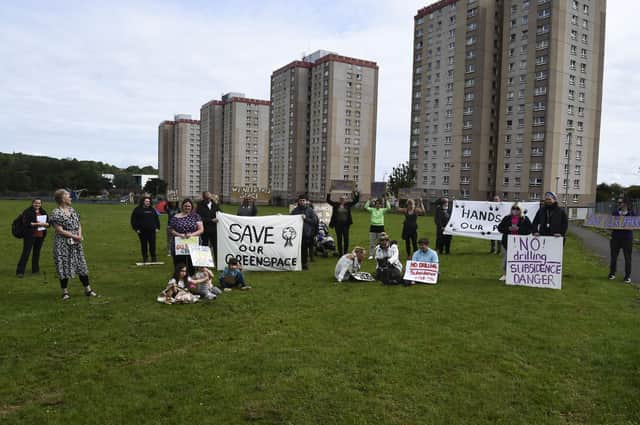Edinburgh faces 'daunting task' in finding land for 25,000 more homes


The Capital and the five other authorities covering South East Scotland have agreed a strategy document setting targets for how many new homes they must be able to provide for by 2030 or 2032.
But there are warnings that the amount of land needed will mean new housing developments in the green belt are inevitable.
Advertisement
Hide AdAdvertisement
Hide AdThe Regional Spatial Strategy for South East Scotland – agreed by Edinburgh, East Lothian, Midlothian, West Lothian, Borders and Fife councils – shows a recommended housing land requirement for the whole area totalling 105,248 new homes.
Edinburgh’s share is 47,000 – but that compares with the amount of land the council has already earmarked for development, which is enough for just 22,194 homes.
One source described making up the difference as “a daunting task” and added: “If they don’t identify enough sites for 47,000 houses it’s open season for developers coming along with planning appeals.”
And land already earmarked for homes at Moredun and Inch Park have recently sparked protests from local residents.
Advertisement
Hide AdAdvertisement
Hide AdGreen housing and planning spokesman Chas Booth said the Edinburgh Poverty Commission, which reported yesterday, had made clear there was a desperate housing shortage and the Capital had to build far more social rented homes.
But he said: “It’s also essential those homes are within existing communities, and close to the places people want to go: workplaces, schools and shops especially. Edinburgh can increase the number of genuinely affordable homes, but building on our precious green belt should be ruled out. Instead we should follow the lead of Paris where brownfield development is prioritised, and essential services within a 15-minute walk or cycle.”
However, Conservative economy spokesman John McLellan said it was quite clear the availability of land was a major issue.
"The bottom line is all the brownfield land available is by and large included in that 22,000 figure, so we are are going to have to look elsewhere. That means some of the previous assumptions about the green belt are not sustainable if that target is to be met.”
Advertisement
Hide AdAdvertisement
Hide AdHe said the 47,000 figure was at the low end of expectations – and another scenario had shown a “very strong” economy was expected to create demand for 80,000 new homes. "The halt to the economy has bought them time to play catch-up with a number that’s already well beyond them.”
Cllr McLellan said: "The challenge is to create new communities people are going to want to live in that are not going to impact negatively onb the communities that already exist.”
Planning convener Neil Gardiner said there had been a consultation earlier this year when a range of potential sites were identified. “We’re currently carefully considering all of the welcome comments made during the consultation and we’ll take a proposed plan to a future committee. At that stage we’ll recommend appropriate sites for development to make sure that the city has enough land to provide for homes in the coming years. Sufficient housing will be an important part of our proposals for sustainable growth.”
A message from the Editor:
Thank you for reading this story on our website. While I have your attention, I also have an important request to make of you.
The dramatic events of 2020 are having a major impact on many of our advertisers - and consequently the revenue we receive. We are now more reliant than ever on you taking out a digital subscription to support our journalism.
Subscribe to the Edinburgh Evening News online and enjoy unlimited access to trusted, fact-checked news and sport from Edinburgh and the Lothians. Visit https://www.edinburghnews.scotsman.com/subscriptions now to sign up.
By supporting us, we are able to support you in providing trusted, fact-checked content for this website.
Joy Yates
Editorial Director
Comment Guidelines
National World encourages reader discussion on our stories. User feedback, insights and back-and-forth exchanges add a rich layer of context to reporting. Please review our Community Guidelines before commenting.